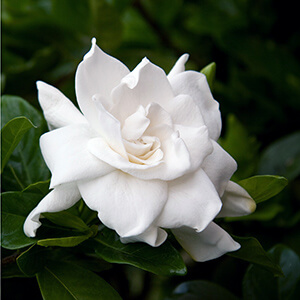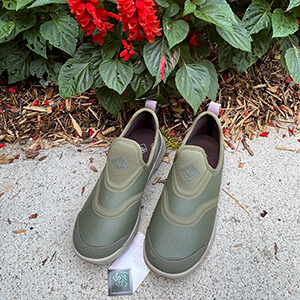
August Beauty Gardenia
The scent gives them away, that distinctive fragrance of warm summer nights that only gardenias can provide. An old-timey flower, many of us in the deep South grew up with the creamy-white blooms.
If you don’t have at least a couple in your yard, you’re missing one of the benefits of summer.
Thanks to hybridizers and growers, there are more varieties and sizes than ever. From the tall, large-blossomed August Beauties to the delicate daisy-form low-growers, there’s a gardenia for just about any sunny spot in your landscape.
August Beauty’s large blooms have made it popular to grow as cut flowers, particularly for wedding bouquets and corsages. In the landscape, it can be planted as a hedge, focal point or in containers.
August Beauty can be shaped into a tree form, well suited for a large container on a patio. It’s a fabulous addition to outdoor living spaces when the bright-white flowers practically glow in the dark and the scent can knock you off your feet.
The single daisy-form gardenias are among the earliest bloomers. This year, mine were so covered they looked completely white. They grow in 3- to 4-foot mounds and once they finished blossoming in late May, I selectively pruned the plants back by cutting random branches about one-third into the plant to encourage air circulation and healthy new growth.
Double-bloom gardenias are perhaps more familiar to Southern gardeners; however, over the past 30 years the single, sometimes called daisy form, has become popular. Many of these are dwarf or midsized shrubs, like White Gem, Kleim’s Hardy and Heaven Scent. They work well planted near entryways or in containers.
Find more varieties online from local growers such as Wilson Brothers online with free shipping, or by visiting local nurseries including Kinsey Family Farms in Gainesville.
Growing tips for gardenias
– Plant in the landscape, tubs or in containers with drainage holes, depending on the cultivar
– Ideal planting time: early spring or late fall
– Light: morning sun, part sun and part shade
– Fertilization: early spring and again mid-summer, with a slow-release fertilizer made for acid-loving plants
– Pruning: after blooming to improve air circulation and shape the plant
– Watering: at least 1 inch per week; more deeply if rain has been sparse
Gardenia diseases, issues:
– Sooty mold, which indicates whiteflies or aphids. Apply insecticidal soap according to label instructions.
– Bud drop: lack of water or insects, such as white flies and aphids
– Yellowing leaves: Root rot from overwatering, or iron deficiency. If the roots are mushy, discard the plant. If this is not the obvious cause, adjust soil pH or apply horticultural iron to the foliage.
– Failure to produce buds: Either the shrub is planted in too much shade or it was pruned too late in the summer. If it’s in too much shade, move it to a sunnier spot in the fall.
Check out these garden boots

Outscape garden boots.
Gardening in boots has become my go-to. From making my way through overgrown areas to clean up to donning them when I’m spraying for disease and insects in my rose beds and vegetable gardens, they’re comfortable and give me protection from overspray.
The newest style from Muck Boot garden and outdoor shoes, Outscape is a lightweight, waterproof shoe that’s perfect for warmer weather or if it’s been raining. They’re available in several colors and two heights – ankle and low. www.muckbootcompany.com.
Photos: Gardenia courtesy of Monrovia, garden boots by Pamela A. Keene.





